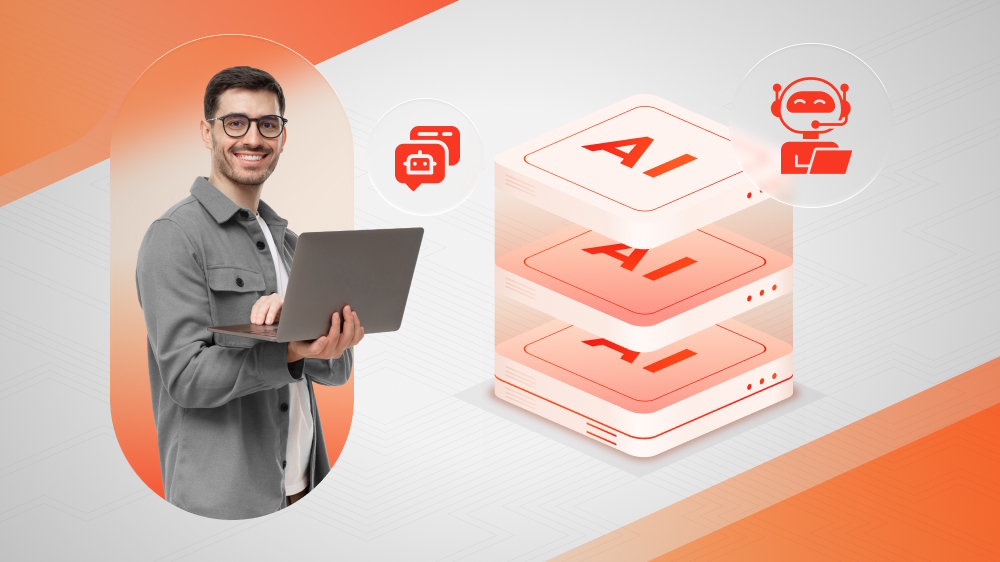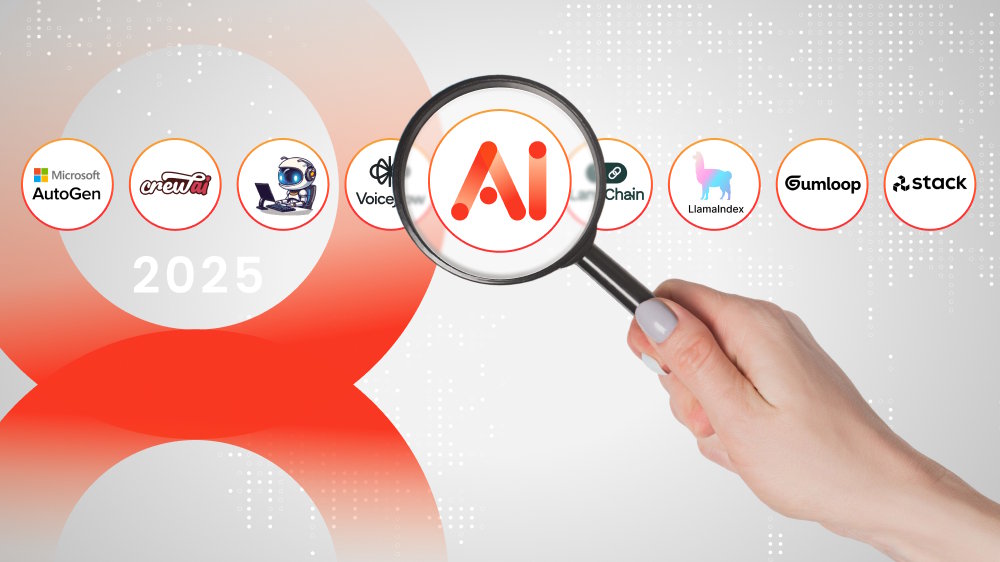
Key Benefits of AI in Education for Students and Teachers
Can AI redefine education and transform learning outcomes? The evidence suggests its benefits are too promising to ignore.
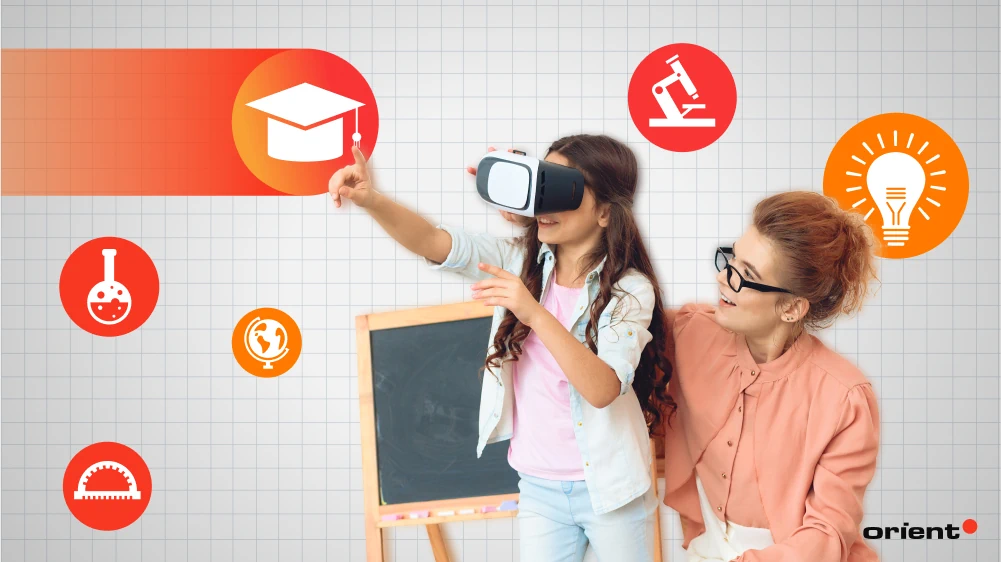
Content Map
More chaptersThe intersection of AI and education holds immense promise. With AI’s rapid development, it naturally opens new possibilities for teachers, students, and school administrations alike.
What are the specific benefits of AI in education? How does this technology benefit teachers, students, and educational organizations? How do you prepare and make the most use of this technology? This article aims to find out the answer to all these questions in today’s rapid digital landscape, where AI seems to be taking over.
Key Takeaways:
- Student-focused AI, teacher-focused AI, and institution-focused AI are slowly but surely changing the educational environment thanks to their various abilities of pattern identification and data analytics.
- Despite the embrace of AI during its early stages in education, teachers still need to learn how to use it appropriately in the classroom environment.
- The key benefits of AI can be viewed from 2 perspectives: for students and teachers.
- For students, AI creates a personalized learning experience and smart learning resources, improves student engagement in class, and offers 24/7 support and career guidance. It also fosters critical thinkers and a more accessible and fair learning environment.
- For teachers, the tool automates and takes off the burden of many administrative tasks and provides meaningful data-driven insights. All in all, AI complements teachers rather than replacing them.
- Although AI is powerful, it still faces challenges regarding data security, equity, tech dependency, accuracy, and the risk of depersonalization.
The Current State of AI in Education

The National Education Association (NEA) has noted that it’s likely that students and teachers interact with artificial intelligence daily, even if it’s only unknowingly. This may occur via media, mobile apps, or other computer software.
Despite there being numerous kinds of AI, e.g. reactive AI or predictive AI, generative AI has recently garnered the most attention from the public and education system. This may be due to its various intriguing capabilities, including the understanding of natural language, content or image generation in a matter of seconds, and its ability to identify patterns or offer personalized recommendations.
In today’s article, however, we wouldn’t dive deep into the different types of AI but rather dive into the types of AI and how AI is applied in education. The NEA has categorized AI in education into three main types:
- Student-Focused AI: These AI tools aim to support students. This AI entails chatbots, adaptive tutoring, and automatic writing evaluation systems.
- Teacher-Focused AI tools: This tool aims to support teachers in their daily tasks with lesson planning tools, assessment supports, and other resource curation systems.
- Institution-Focused AI: This AI’s goal is to take the weight of the administrative and operation team by scanning for safety concerns, scheduling, and identifying risks.
We need to keep in mind that there is a lack of strong and independent research about AI’s contribution, support, or role in effective learning. Still, educational institutions have quickly embraced AI in their daily operations and lessons.
- 86% of students say they’re already using AI in their studies, according to a survey from the Digital Education Council.
- 84% of teachers are now utilizing AI tools, and many of them intend to increase their usage in the next academic year, according to a Study.com survey.
- By 2024, 47% of learning management systems will be AI-enabled. This is fueled by the broad use of AI-powered technologies that make creative and efficient learning solutions possible.
These statistics show that teachers and the leaders of education systems need to be prepared to assess the appropriate use of AI to assist students and help them become AI literate. As the NEA stated, teachers not only need to learn to teach with AI, they need to learn how to teach about AI.
Key Benefits of AI in Education
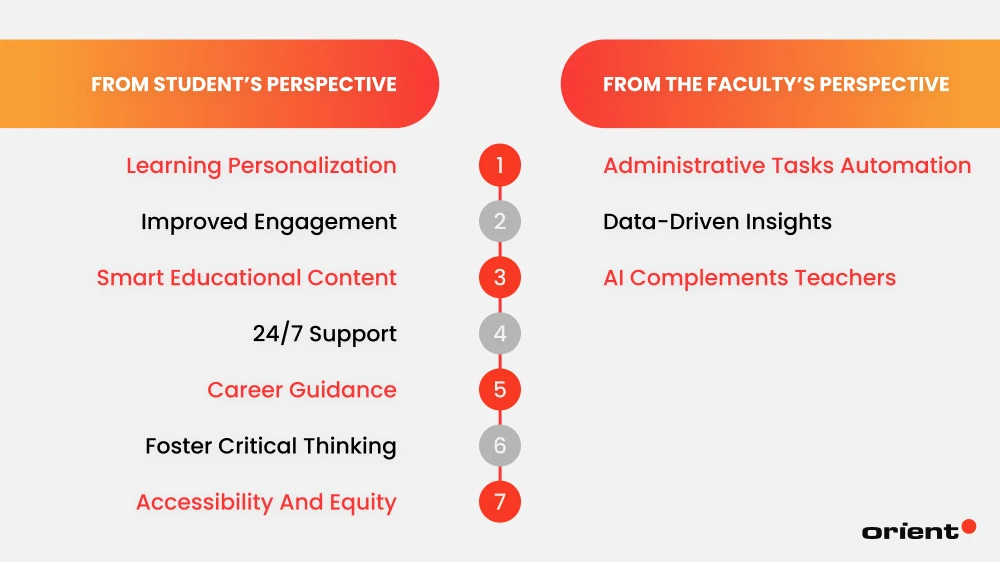
It’s easier to do a deep dive into AI’s benefits when we view them from both the students and the educational institute’s points of view.
From Student’s Perspective
Numerous statistics have proven that AI’s quickly become a companion for students and their learning journey. Turnitin, a plagiarism-checking service, claims that its detection tool discovered millions of papers that might include a sizable amount of AI-generated content. The Wired article estimated around 22 million papers with AI-generated content detected using this tool.
With its widespread use, it’s worth examining why AI is trusted and utilized by students worldwide.
Learning Personalization
Everyone’s learning approach is different. With the aid of AI, teachers can tailor their teaching to those different needs instead of using a one-size-fits-all approach with a minimum increase in their workload. Personalized learning with AI customizes instruction to each learner’s unique needs, pace, and progress. AI analyzes the learning trends and student performance to provide detailed feedback and recommend suitable resources to help the student improve.
Personalized learning with AI helps students stay more engaged and prevent them from falling behind. Tools like Perusall or Quizizz are great for both gamified learning and personalized, engaging learning and revising.
Improved Engagement
Closely related to the benefit of personalized learning, AI is a great tool to foster learner engagement. While AI itself is a powerful technology, it’s rarely used alone. Often, it is used in tandem with other technologies (For example, virtual reality (VR) and augmented reality (AR)) to enhance lesson and student engagement. For example, to explain complex concepts like “energy,” teachers can use AI models and VR/ AR to allow students to explore a wind turbine in action, observing how kinetic energy from wind is converted into electrical energy.
Using AI-powered tools and adaptive platforms, teachers can create interactive quizzes or simulations that respond to student’s input. Not only will students memorize the lessons better, but they are also having fun and learning about how technology is used in classrooms.
Smart Educational Content
The creation of high-quality resources in multiple local languages can be costly. Organizations and governments may also lack the essential resources to improve educational outcomes and equity. The solution? Use AI to produce a first draft for experts to review later.
Educators can use AI to translate the source material into numerous languages. Natural language processing has given AI the ability to translate languages fluently and naturally.
24/7 Support
AI chatbots are “always available tutors”. Chatbots nowadays are sophisticated and can answer questions naturally. Virtual tutors offer students 1 on 1 tutoring sessions, personalized learning and feedback based on the analytics of the student data. Carnegie Learning’s MATHia and Duolingo are examples of an intelligent tutoring system.
Career Guidance
AI’s ability to collect and analyze a large amount of data makes it an excellent tool for identifying patterns and predicting trends. When used with academic advising, AI provides helpful and insightful career advice for students. This is not to say that AI will completely replace human advisors, but that it’s a great starting point for students who need more help with their career choices. Students can always ask the AI more questions if they further tailor the advice.
Foster Critical Thinking
While it’s easy to lean into the argument that AI makes students lazy and dependent on technology, this technology can be used to foster critical thinking. Learners are naturally intrigued by AI and the content it’s generated. Teachers can use its answers or content as a stepping stone for thought-provoking discussions. For instance, teachers may ask students to discuss AI’s ethical implications or how it will serve the healthcare industry in the future. These rich discussions foster strong thinkers.
Accessibility and Equity
AI makes learning more accessible and inclusive. Millions of children with disabilities don’t have access to suitable learning materials or educational support. AI apps and platforms can support the creation of learning materials that are accessible to students who are visually impaired or hearing impaired. For example, AI can produce sign language videos, text-to-speech conversion or audio descriptions. Learners don’t even need to be connected to the Internet at all times, the material can be downloaded and used offline.
From the Faculty’s Perspective
Students aren’t the only ones benefiting from AI’s endless potential. Teachers and the administrative and operation teams are also taking advantage of this technology.
Administrative Tasks Automation
An educational institution’s typical administrative workload is massive. An IBM Powered Watson Chatbot, TIA, was employed to help a Canadian University administrative team deal with their workload – 80,000 emails, 71,000 phone calls, and 37,000 in-person visits a year.
Supporting and automating tasks is only the beginning. Teachers and staff use AI to automate tasks like scheduling, tracking attendance, managing students’ records, and grading. Teacher’s time is freed immensely, and they can focus more on teaching and taking care of their students.
Data-driven Insights
Sometimes, it can be challenging for teachers to keep track of every single individual student in a crowded class. Students’ needs may be overlooked. This is no longer a problem with AI, as it gathers student data and performs careful analytics on all aspects, including their progress, performance, or weak areas. As a result, teachers can make data-driven decisions to improve lesson plans or make timely targeted interventions.
AI Complements Teachers
All in all, the potential of AI is endless, and so is its ability to support teachers’ needs in various tasks. It’s important to note that AI in no way replaces teachers and educators, but it is an extremely efficient tool in fostering a more efficient learning environment. It is especially helpful when the school is understaffed and may struggle to accommodate their learner’s and parent’s needs.
AI’s Limitations in Education
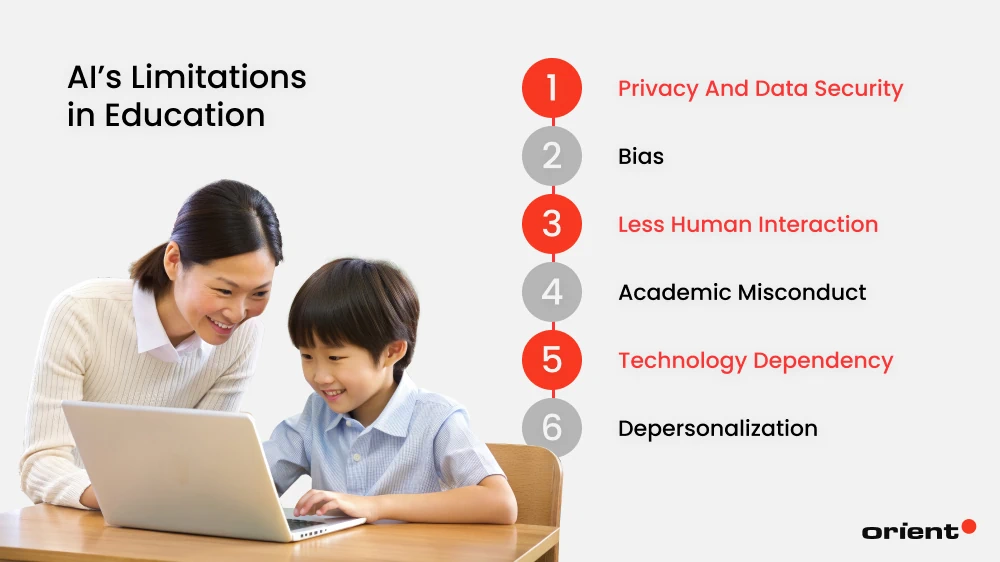
As great of a tool AI is, it is still in its infancy of implementation in the education sector. It undoubtedly is transforming the education sector, though gradually and incrementally. This, however, doesn’t mean the technology is perfect or without any flaws. Teachers and faculty members alike should be acutely aware of AI’s limitations to apply suitable measures to ensure AI is used efficiently and ethically.
- Privacy and Data Security: There has yet to be a comprehensive guideline of how data collects, uses, and protects user data. Educational AI apps handle sensitive information of adults, minors, and adolescents, so schools should double-check to make sure the service provider strictly adheres to all the industry security standards and takes suitable measures to secure data.
- Bias: AI is by no means perfect, and it’s only as good as the data it is used to train on. If the data set is biased, the AI response will be biased. This is extremely concerning as AI used in school is typically used for teaching and administrative tasks. Should AI make biased decisions based on gender or race, it will create a harmful educational environment.
- Less Human Interaction: As mentioned earlier, AI should only complement teachers, not replace them. Spending too much time with technology and a lack of human interaction may cause students to feel isolated, disconnected, or less motivated.
- Academic Misconduct: The more sophisticated AI is becoming, the harder it is to detect students cheating using AI. Numerous cases have been reported in which students use AI to complete their assignments or theses. Schools and teachers are working hard to fight against this, and one such way is to use AI tools to detect AI-generated content. But again, these tools are not perfect and often produce false positives, where a student’s 100% original work may be identified as AI-generated.
- Technology Dependency: While AI enhances accessibility and equity, it still requires a certain number of resources - computers, the Internet, a monitor, and perhaps a projector. We also need to include the monthly costs for generative AI systems. This creates a digital divide where underdeveloped countries and areas don’t have the same access to modern technology.
- Depersonalization: While AI is an excellent tool for analyzing data to better understand students’ performance and progress, it’s equally important to focus on building meaningful relationships with them. Good teacher-student relationships have proven to be extremely beneficial – students’ academic performance is better, they develop a better sense of self-worth, and their interpersonal skills are improved. The overuse of AI might pose a risk of diminishing these benefits.
Best Practices When Implementing AI in Education
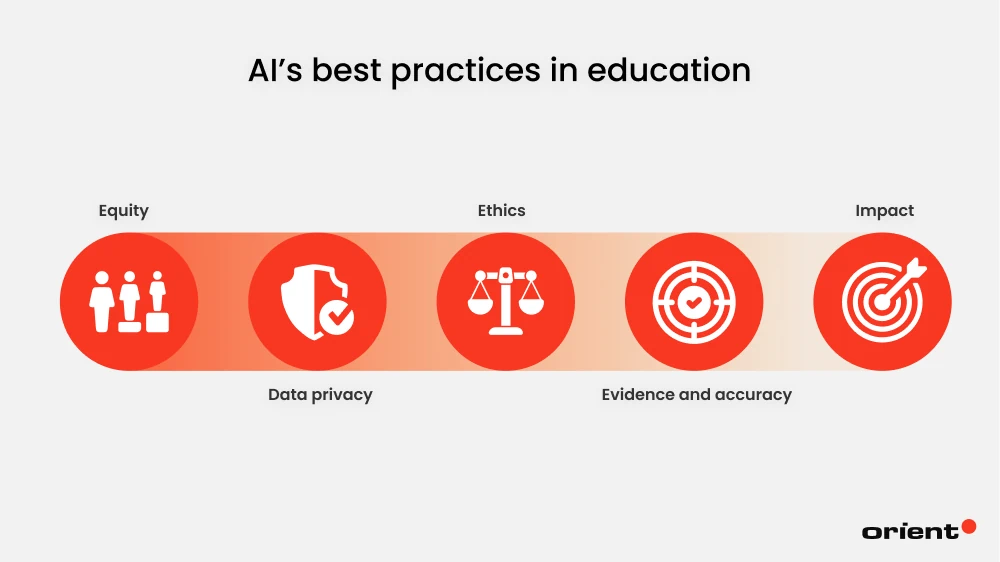
AI holds immense power and potential to transform education – both for students and teachers. It’s a powerful technology still in its early days of development, and it’s more than likely that it’ll continue to develop in leaps and bounds to produce even more sophisticated and human-like responses.
However, as it still holds numerous limitations, every educational institution should operate with the following best practices in mind.
- Equity. AI should be designed and developed with inclusivity and equity in mind. This tool shouldn’t worsen any existing form of inequality or introduce new forms of inequality.
- Data privacy. Organizations have to implement security measures to protect data privacy and security.
- Ethics. AI should adhere to ethical principles. This includes fairness, human rights, and dignity. Educators and developers need to ensure that the AI system upholds these values.
- Evidence and accuracy. AI must be rigorously assessed to ensure its reliability and accuracy across different contexts, languages, and educational settings.
- Impact. AI tools must be constantly monitored for their impact on educational outcomes.
Bottom Line
AI, especially generative AI is a groundbreaking technology. However, it’s important to remember that it doesn’t replace “real” educators but rather lightens their workloads and contributes to the creation of effective and modern classrooms. Balancing its pros and cons, and making an informed decision regarding its usage, and platform, ensures you’re harnessing AI’s power in and ethical and efficient way.
Orient Software wants to help you make such decisions. Together, let’s unlock the magic of AI in education, fostering innovative classrooms where student success is fueled by a perfect blend of human intelligence and artificial intelligence. Don’t hesitate to reach out to us today!



